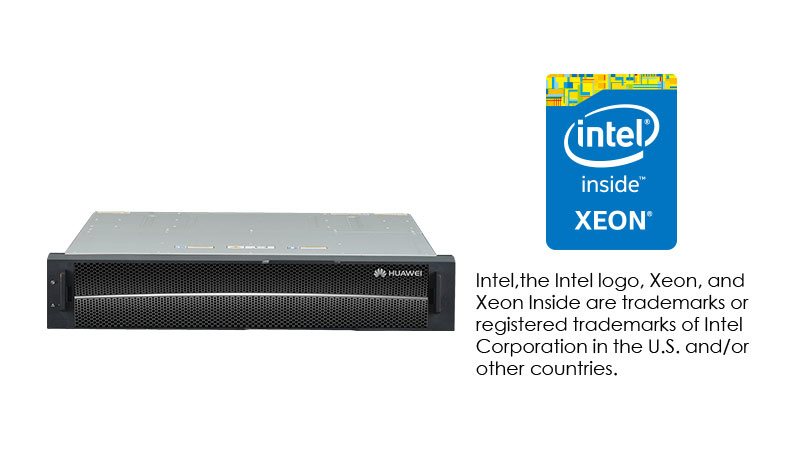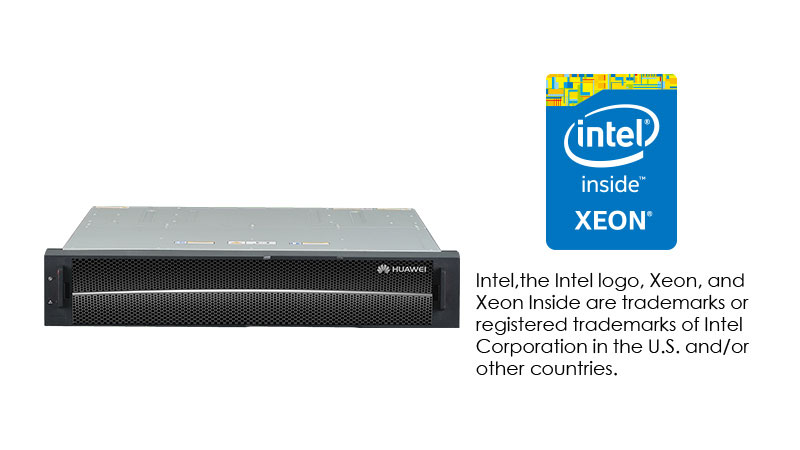
Model
|
Performance node
|
Capacity node
|
Mini-capacity node
|
Hardware Specifications
|
System architecture
|
Symmetric distributed architecture
|
Number of nodes
|
3 to 288
|
CPUs per node
|
2 x Intel E5 series
|
Cache capacity per node
|
Standard configuration: 48 GB
|
Standard configuration: 32 GB
|
Scalable to 192 GB
|
Scalable to 192 GB
|
Data disk types
|
2.5-inch SSD and SAS disk
|
3.5-inch SSD , SATA and NL SAS disk
|
Number of disks per node
|
Standard configuration: 4 x 2.5-inch 200 GB SSDs + 21 x 2.5-inch 600 GB SAS disks
|
Standard configuration: 1 x 3.5-inch 200 GB SSD + 35 x 3.5-inch 4 TB SATA disks
|
Standard configuration: 1 x 3.5-inch 200 GB SSD + 11 x 3.5-inch 2 TB SATA disks
|
Front-end network type
|
10GE, 40GE InfiniBand, or GE
|
Internal network type
|
10GE, 40GE InfiniBand, or GE
|
Application scenario
|
OPS-intensive application scenario
|
High-throughput application scenario
|
Small capacity application scenario
|
Software Features
|
Data protection levels
|
N+1, N+2, N+3, and N+4
|
File system
|
Wushan distributed file system, which supports global namespace and can be dynamically expanded up to 40 PB
|
Value-added features
|
InfoTier, InfoEqualizer, and InfoAllocator
|
Thin provisioning
|
Supported, without the need for manual configuration
|
Data self-healing
|
Automatic, concurrent, and quick data restoration at a speed of up to 1 TB/hour
|
System expansion
|
One-click online expansion, allowing a single node to be added within 60 seconds
|
System management
|
Different users allocated different management rights
|
Rights- and domain-based user management
|
Global cache
|
Up to 55 TB
|
Supported operating systems
|
Windows, Linux, and Mac OS
|
Supported protocols
|
NFS, CIFS, NIS, Microsoft Active Directory, LDAP, and SNMP
|
Alarm notification
|
Email, SMS, SNMP, and Syslog
|
Elimination of instant maintenance requirements
|
Automatic bad disk detection, alarm notification, and centralized batch replacement of bad disks, avoiding the need for instant disk replacement and reducing manual maintenance
|
Physical Features
|
Power supply
|
AC 100 V to 127 V, AC 200 V to 240 V
|
Dimensions (H x W x D)
|
Node
|
2 U, 86.1 mm x 446 mm x 582 mm (3.39 in. x 17.56 in. x 22.91 in.)
|
4 U, 175 mm x 446 mm x 582 mm (6.89 in. x 17.56 in. x 22.91 in.)
|
2 U, 86.1 mm x 446 mm x 582 mm (3.39 in. x 17.56 in. x 22.91 in.)
|
Cabinet
|
Maximum dimensions: 2000 mm x 600 mm x 1100 mm (78.74 in. x 23.62 in. x 43.31 in.)
|
Weight
|
Node
|
Fully loaded with 2.5-inch disks: ≤ 35 kg (77.18 lb)
|
Fully loaded with 3.5-inch disks: ≤ 70 kg (154.35 lb)
|
Fully loaded with 2.5-inch disks: ≤ 32 kg (70.56 lb)
|
Cabinet
|
Maximum weight when fully loaded with 2 U nodes: 576.7 kg (1271.62 lb)
|
Maximum weight when fully loaded with 4 U nodes: 725.5 kg (1599.73 lb)
|
Typical power
|
420 W
|
580 W
|
260 W
|
Operating temperature
|
5–35ºC (41–95ºF) when the altitude ranges from –60 m to +1800 m (–196.85 ft. to +5905.44 ft.)
|
When the altitude is higher than 1800 m (5905.44 ft.) but lower than or equal to 3000 m (9842.40 ft.), the operating temperature drops by 0.6ºC (1.08ºF) for every 100 m (328.08 ft.) altitude increment.
|
Operating humidity
|
20–80% R.H.
|




